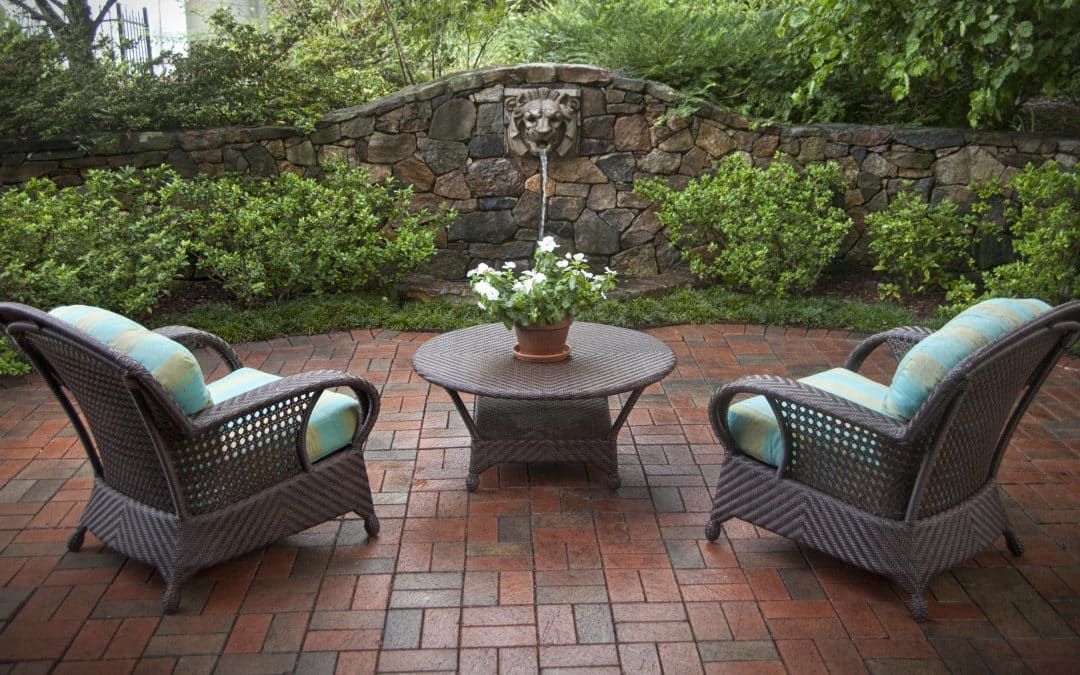Being green is a way of life for Pine Hall Brick Company. It’s the essence of our products and the way we make them. It’s our company. It is part of everything we do. Architects, builders, landscapers, and paving professionals can promote sustainability with everything we make. And we do it because we know that what we do today will determine the future for all of us.
Photo above by Daniel Ray for international landscape designer Sally Pagliai of Studio Pagliai who used English Edge® Full Range in this very green garden patio. Read her story here.
Clay bricks are a sustainable building material. They’re sustainable because they are made of clay and water, two of the planet’s most abundant resources; because they last virtually forever; because they have endless recycling options; and because they are responsibly mined, manufactured, and sold.
Since we began in 1922, we’ve recognized the importance of sustainability, defined by the Architect’s Handbook of Professional Practice as the concept of meeting today’s needs without compromising the ability of future generations to meet their own.
To us, it means providing a product that lasts a very long time while at the same time minimizing the resources required to produce it. In fact, virtually all the brick we’ve made since we began more than a century ago is either still in its original use, recycled to other applications, or recycled back to the earth, which requires no special handling. Brick is an inert product with virtually no emissions.
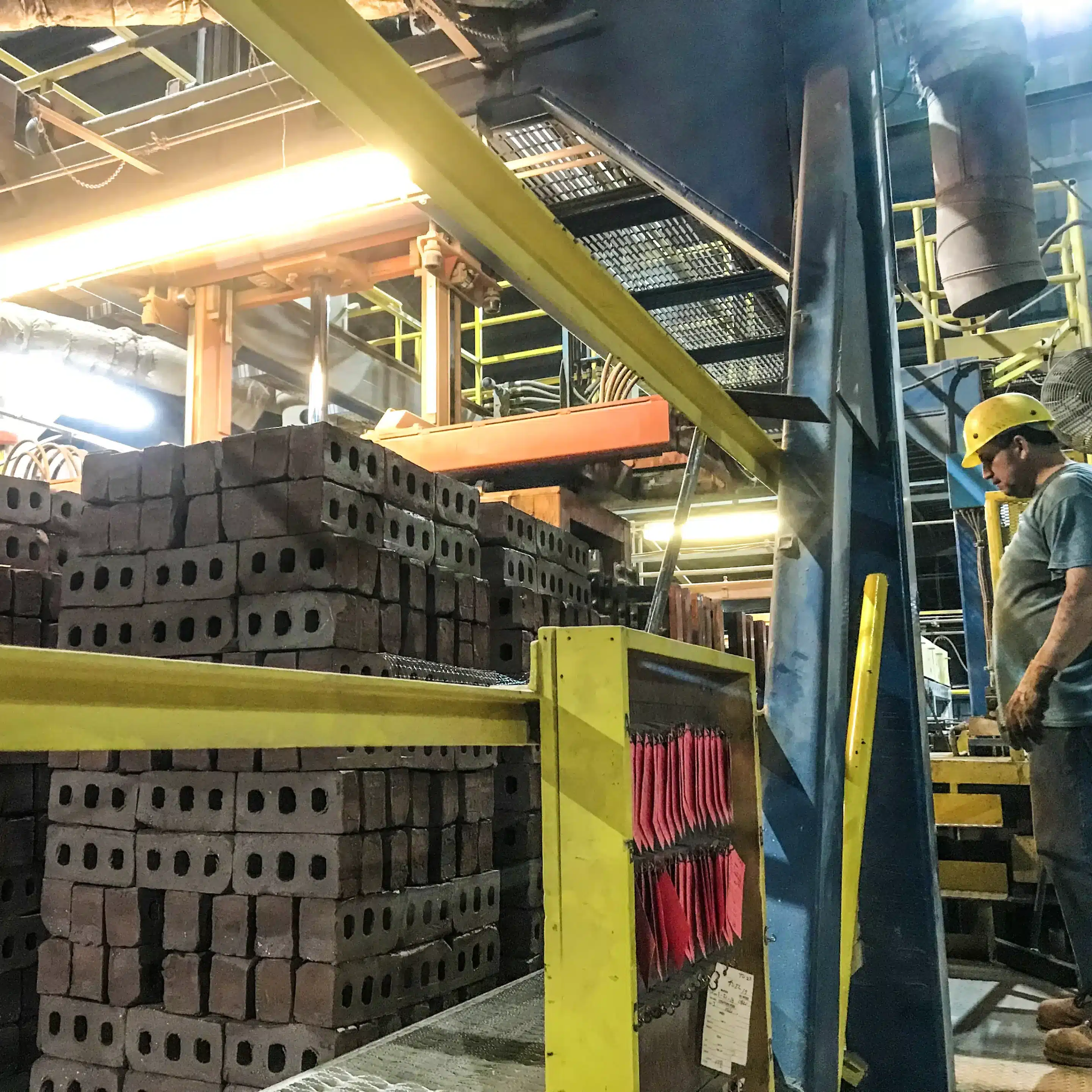
Facebrick being prepared to load and ship from Pine Hall Brick Company in Madison, NC.
The products and how they’re made
Pine Hall Brick Company makes clay brick pavers, used in patios, walkways, driveways, and streets; and facebrick, used in vertical walls for houses, churches, office buildings, and schools.
Put simply, bricks are clay shale mined from the earth, mixed with water, and heated to 2,000 degrees in a kiln.
Sustainability is there every step of the way.
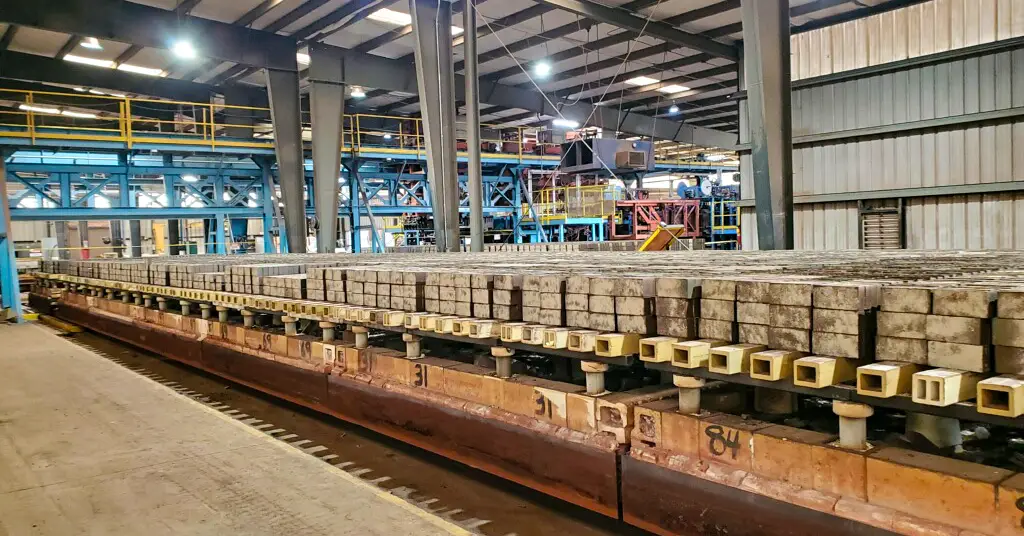
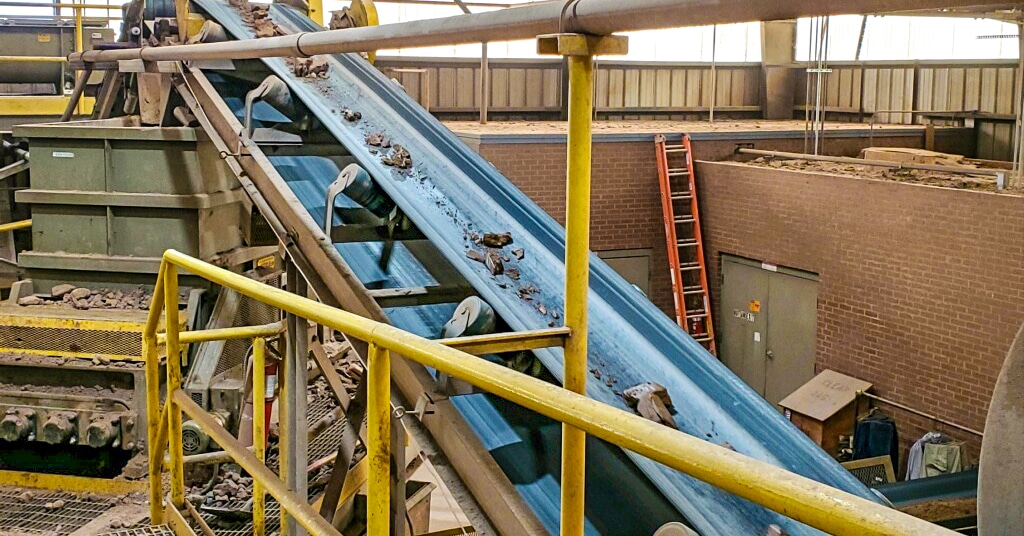
Above, top, clay pavers are seen on trucks after their trip through the kiln. The bottom photo shows broken brick being recycled immediately in our Madison, NC plant.
Shale
Shale – hardened clay – is found just beneath the earth’s surface, is rarely mined more than 25 feet deep, and is never dug deep enough to affect the water table. All of Pine Hall Brick Company’s mines are within 10 miles of the facility they serve, and the company mines about five acres per facility per year.
Once the surface shale is extracted, the area is regraded to control erosion while planting new trees or grasses. The preferred reclamation effort calls for planting seed-bearing plants like milo, millet, lespedeza, and wheat to encourage wildlife in the affected area.
Water
Pine Hall Brick Company’s water comes from on-site wells or nearby rivers. It does not involve any water that has been treated for human consumption. Each plant site uses about 5,000 gallons of water per day, or about the same amount of water that a farmer would use to irrigate a 75-acre farm one time.
In addition, the amount of water that is used in brickmaking is far less than the annual rainfall; and all water used within the facility gets recycled back into brickmaking so that no process water leaves the site.
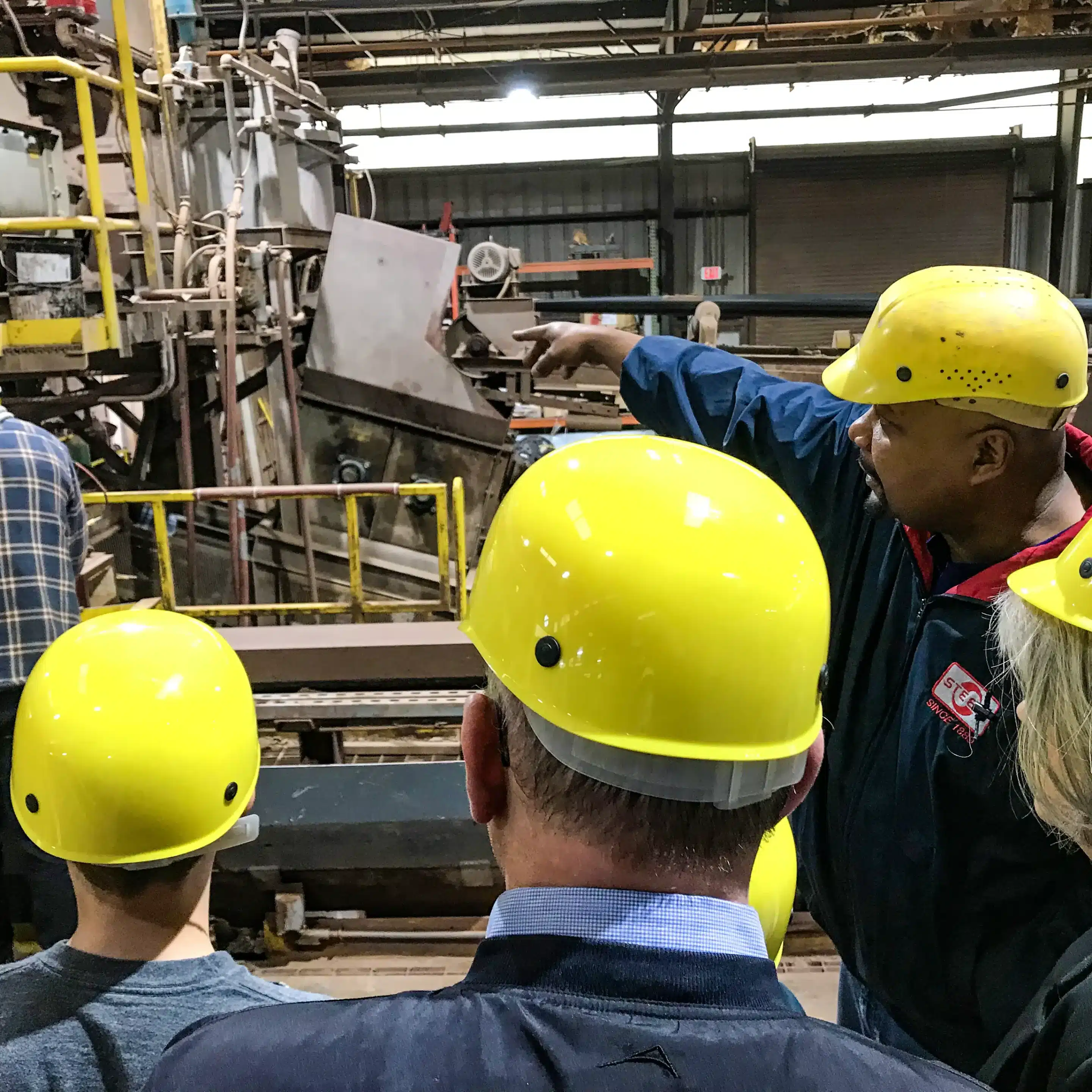
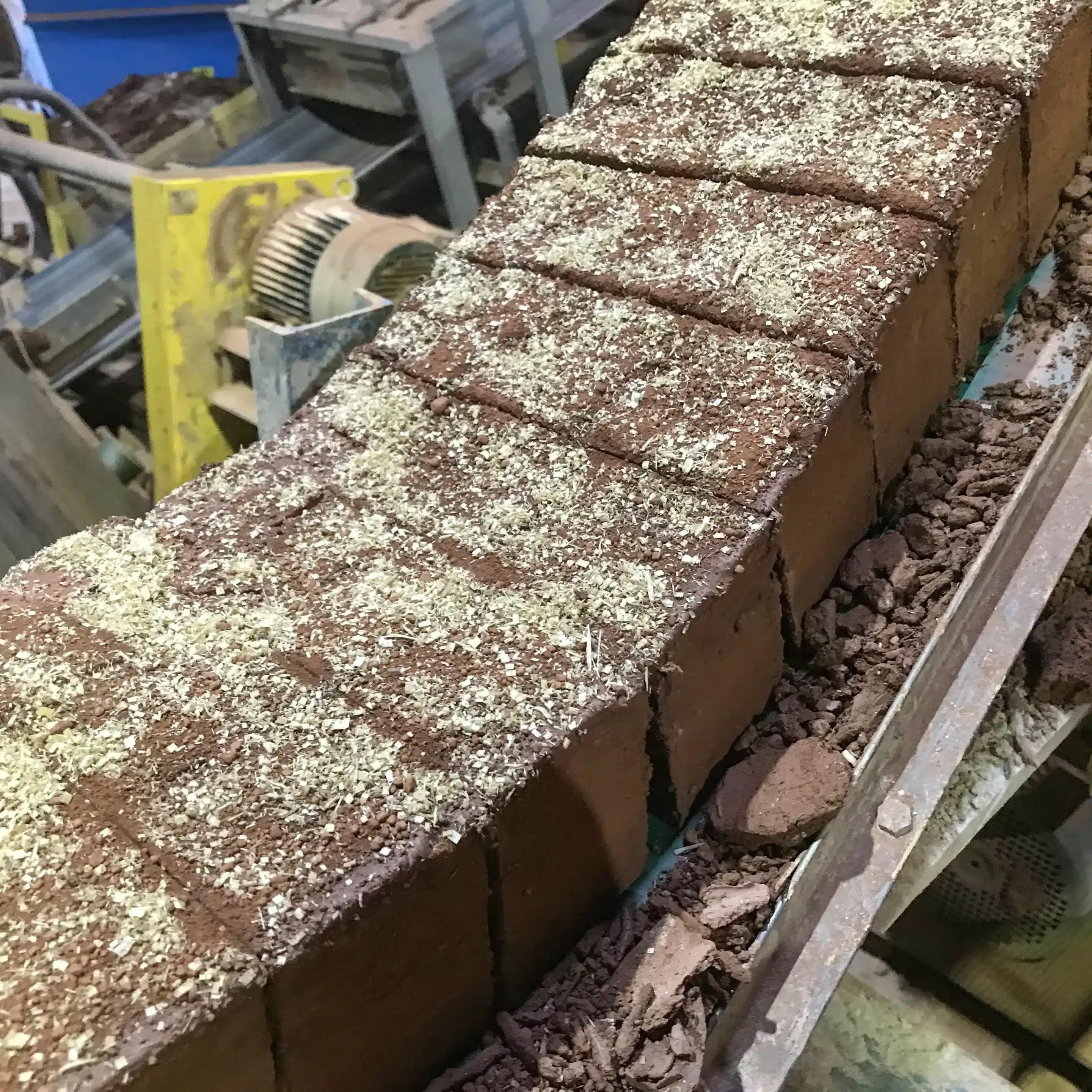
Families enjoy seeing a fascinating process in our plant tours.
Heat
Natural gas is the predominant fuel used to fire bricks because it is the cleanest fuel to burn. Pine Hall Brick Company operates with gas on an “interruptible” basis, which means that in times of extreme demand, like very cold periods in the winter, we will shut off our gas usage in order for hospitals and consumers to be able to get natural gas.
Alternative fuels can be both cheaper to use and helpful for the environment. We use them when we can do so cleanly, safely, and within the guidelines of our environmental permits. Several of our kilns are fired on waste wood that otherwise would require disposal in a landfill. Wood particulate comes from the flooring industry and may contain trace amounts of binder or finish material. The ability to burn them completely plays a helpful role in waste disposal.
One of our main corporate and environmental objectives is to continuously monitor and improve our fuel usage and efficiency. We invest each year in capital programs to lower our energy use per brick manufactured. Whether it’s rebuilding kilns, altering our material mix, or using alternative fuel sources, we have lowered our energy use per brick over the last ten years by 19 percent.
The good news is that all the effort pays off for the consumer. The energy used to produce brick compared to its life expectancy is lower than most materials like concrete, glass, steel, and aluminum. It’s also lower in embodied energy than EIFS and fiber cement products.
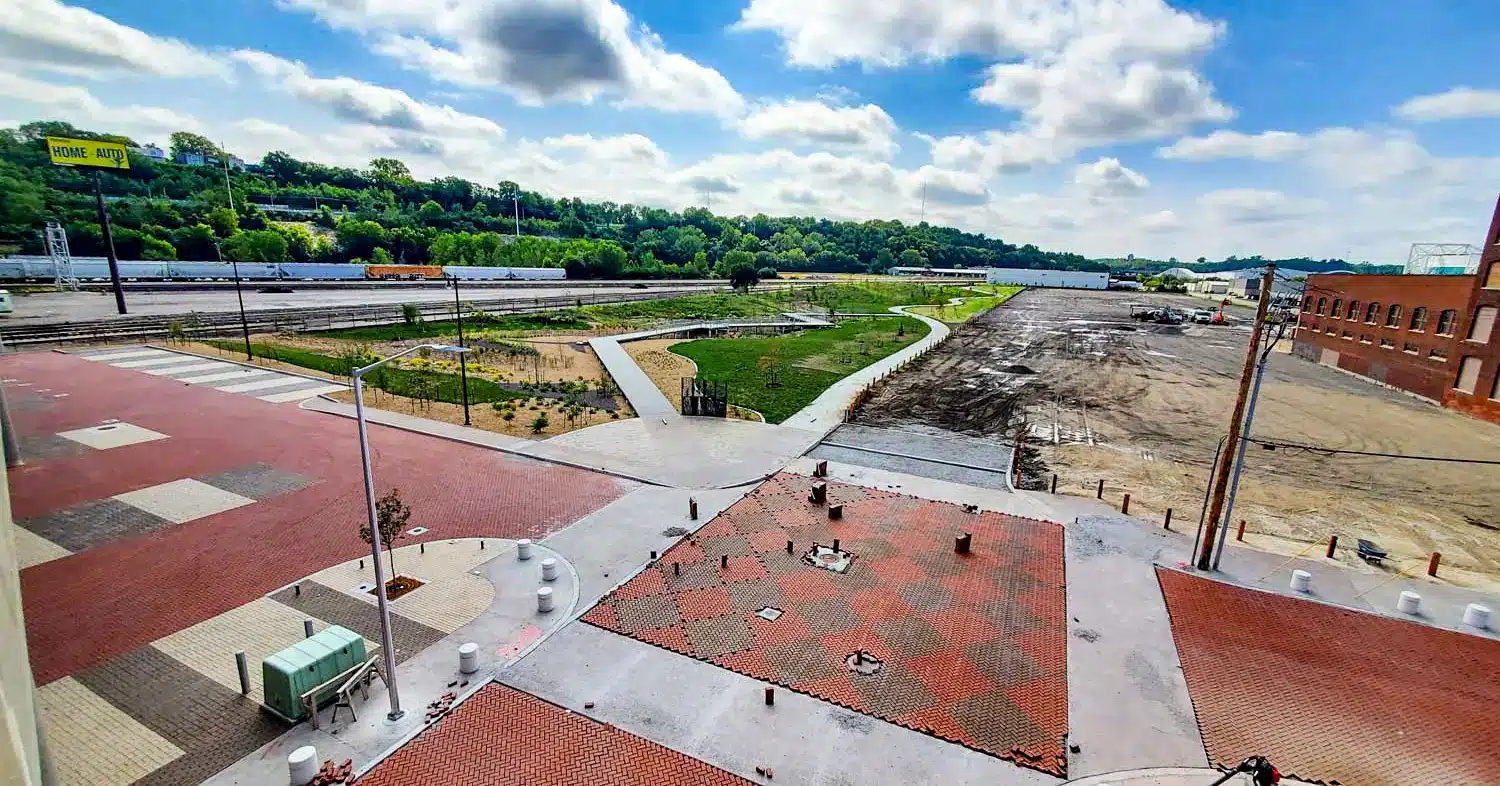
Kansas City, MO, installed acres of our StormPave™ permeable pavers to create a greener parking facility and event space that protects the wetlands where two major rivers converge from stormwater runoff. Full story here. Photo courtesy HNTB.
Green benefits – once brick’s been installed
When used in walls, brick maintains energy for the home, because it slowly absorbs and releases thermal energy, which means that it can keep your house cooler in the summer by decreasing the load on your air conditioner.
Similarly, it does just the opposite in the winter, retaining heat into the night hours that helps reduce heating bills. In this sense, the use of brick can regulate the temperature for your home, keeping you comfortable while minimizing the impact of heating systems and air conditioning units on our planet.
In such uses as pathways, sidewalks, patios, and streets, the use of clay pavers is the definition of sustainability, given that they will last for centuries.
In particular, Pine Hall Brick Company’s StormPave™ clay permeable pavers are green in another sense. because, properly installed, they enable rainwater to take pollutants into the ground, where they are naturally filtered, instead of having them wash across the pavement and depositing them in a nearby stream. They can also open up more land for development, because less land needs to be set aside as drainage ponds.
Use of the StormPave™ pavers can also be used to gain LEED (Leadership in Energy and Environmental Design) certification by the U.S. Green Building Council. The certification is a globally recognized green building certification program that verifies buildings are designed, constructed, and operated sustainably.
It’s a symbol of sustainability achievement and a framework for creating healthier, efficient, and cost-saving buildings.
StormPave™ pavers enable architects to obtain LEED credits in four ways, including stormwater design, heat island effect (non-roof), recycled content (both of which depend on the color chosen), and use of regional materials.

Facebrick is excellent for HVAC energy conservation. Adding an innovative radiant barrier like this makes brick an unbeatable value in sustainability. In research conducted by the National Brick Research Center at Clemson University, this wall system reduced heat gain and heat loss by approximately 50%.
A policy for our world
Pine Hall Brick Company has always met or exceeded all federal and state regulations regarding clean air standards and mining operations. We believe that it is important to treat our environment with care and preserve it for generations to come.
We are committed to going beyond what is required and to being a good steward by doing what is right.
Our Environmental Policy is:
• To meet or exceed all local, state and federal environmental regulations applying to any business segment in which we operate.
• To continuously monitor and evaluate, and improve the environmental impact of all plant and mining facilities.
• To continuously monitor and invest in resources to lower the energy employed per brick manufactured.
• To minimize any waste production throughout our business footprints and to develop consistent methods of recycling.
• To aggressively respond to any environmental distress resulting from an operational malfunction.
• To educate and empower employees to implement our environmental policies and objectives daily.
• To provide customers with “no cost” recycling options for jobsite brick waste returned to our facilities.
For more information on the sustainable nature of brick, download our document on sustainable brick.

